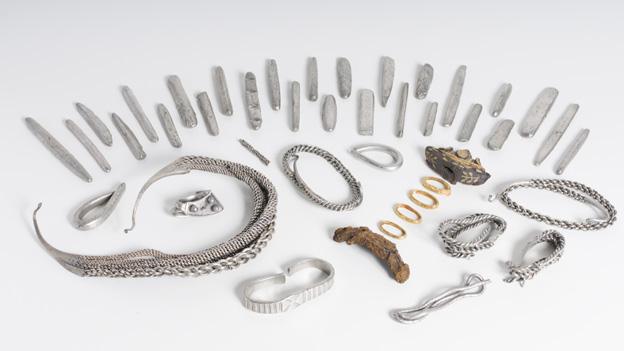The best places in England for unearthing lost treasure
- Published
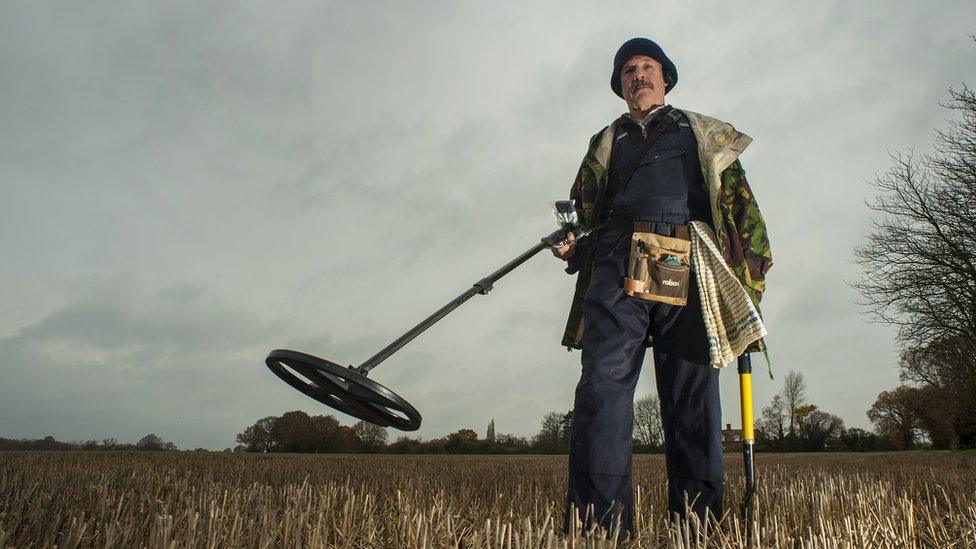
Metal detectorist Stuart Elton says nearly every field in Essex hides some kind of Roman artefact
Data shows, external Norfolk is the best spot for treasure hunters. But is everything as it seems?
Of all the treasures found in the ground, fewer than 5% are discovered by professional archaeologists. More than 90% are unearthed by amateur treasure hunters armed with metal detectors - devices originally devised for hunting down landmines.
Recent finds include a hoard of Roman coins in Herefordshire, a collection of Norman and Anglo-Saxon coins in Buckinghamshire and collection of Viking jewellery in North Yorkshire.
But one county in England boasts more treasure finds each year than Herefordshire, Buckinghamshire and North Yorkshire combined: Norfolk.
Coroner figures (treasure is declared such by coroners) for the past three years reveal the county has on average 116 treasure finds a year, followed by Essex with 71, Suffolk with 65 and Lincolnshire with 59.
Coventry, Bristol and the City of York, on the other hand, have not had a single treasure declaration in three years.
What happens when a detectorist makes a find?
So why is the east of the country such a treasure hotspot?
Archaeologist Ben Robinson believes the answer lies in a mix of land use and history.
"There's a rich tapestry of habitation in East Anglia and that history has left its legacy in the soil.
"And then comes the plough, turning that soil over each year, bringing new finds towards the surface."
Because finds must be at least 300 years old to be classified as treasure, artefacts from the industrial revolution in major cities such as Manchester, Leeds and Birmingham do not figure.
Similarly, because of the precious metal criteria surrounding treasure, the metallic artefacts of the steel city of Sheffield do not register either.
"You don't get much from the modern major cities," said Michael Lewis, head of portable antiquities and treasure at the Portable Antiquities Scheme (PAS), external. "In London, most of the finds come from mudlarks on the foreshore of the Thames."

Treasure is...
Any object that is at least 300 years old when found and:
is one of at least two coins in the same find with a precious metal content of at least 10%
if the precious metal content is less than 10%, is one of at least 10 coins in the same find
is not a coin but has precious metal content of at least 10%
is any object of any material found in the same place as another object that is deemed treasure
any group of two or more metallic objects of any composition of prehistoric date that come from the same find
is an object substantially made from gold or silver but is less than 300 years old

The BBC's map of treasure does seem to reflect the sites of the much older major cities such as Norwich, Lincoln, York, Bristol, Ipswich and Winchester.
But while finds might reflect historical areas of settlement, far more important, says Dr Lewis, are the activities of the people who make the finds.
East Anglia - an area of arable farmland - and the flats of Lincolnshire are simply easier to metal detect on than hilly farmland in, say, Cumbria or the Pennines.
Metal detectorists cannot detect in built-up urban environments, meaning town centre finds - such as the Fenwick Treasure in Colchester - are nearly always made by archaeologists brought in as part of a redevelopment.
In the 1980s, archaeologists and metal detectorists were at war over the nation's subterranean heritage.
But in the 20 years since the PAS set out clear guidance for the reporting of finds by the public, the relationship between responsible detectorists and archaeologists has thawed.
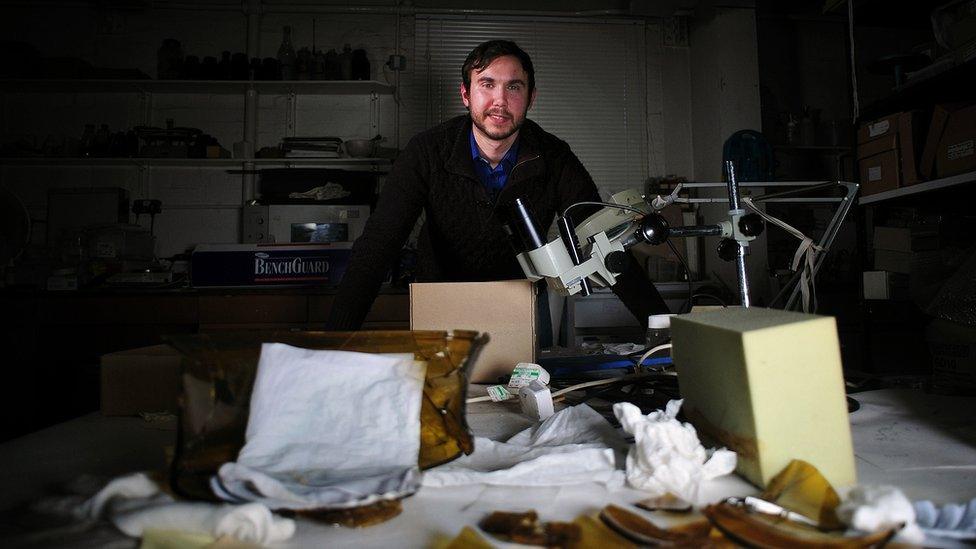
Ben Paites is the lone finds liaison officer for Essex, one of the country's treasure hunting hotspots
All finds should be reported to one of the country's 37 finds liaison officers (FLO). Between them, they have collated details of more than one million finds since the scheme started.
Dr Lewis said of the 80,000 finds reported each year only 1,000 or so were treasure.
The location of treasure finds also reflects the regional vibrancy of a metal detecting as a hobby and - in some instances - the talent of the detectorist.
"Some people seem to find lots of stuff while others hardly ever find anything," he said. "The fact is some people are better at metal detecting than others."
Ben Paites, the FLO for Essex, says some areas have a "culture of reporting" finds.
"Before the Treasure Act came into effect and before the PAS was established, only a few museums really interacted with metal detectorists who were finding these things," he said.
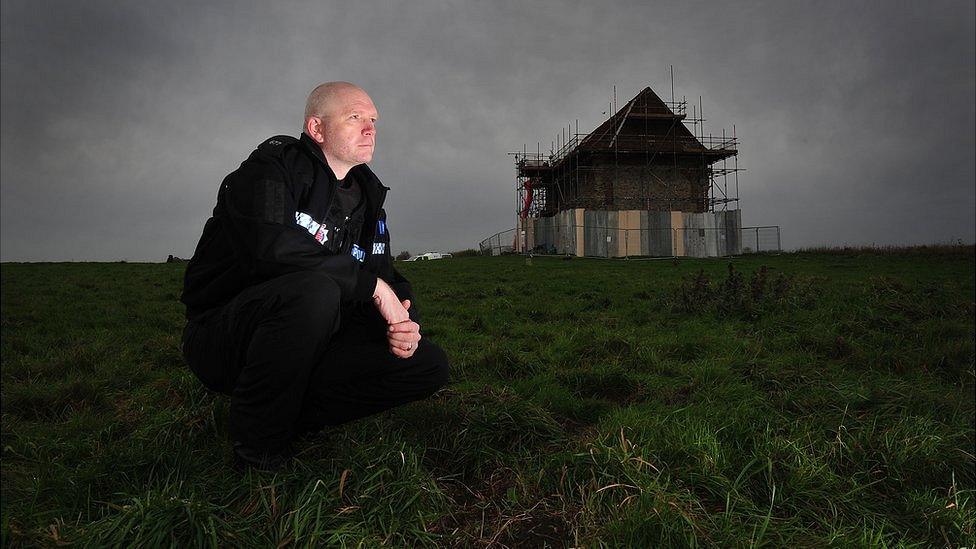
PC Andy Long has found illegal treasure hunters digging up the ground of scheduled ancient monuments such as the site of St Peter's Chapel at Bradwell in Essex
The first areas to have FLOs were Kent, Norfolk, the West Midlands, North Lincolnshire, north-west England and Yorkshire. Four of these regions feature towards the top of the treasure finds list.
But sadly some treasure finds - the exact number will never be known - pass under the radar.
While some might not be reported out of ignorance of the rules, others are the result of people, known as night hawks, deliberately metal detecting without permission.
PC Andy Long, Essex Police's wildlife and heritage crime officer and the national intelligence lead for the anti-night hawking effort Operation Chronos, says treasure thieves are not just stealing artefacts, they are stealing history.
"Beneath the ground there's an enormous amount of history and in time it will be recovered - but we need to know the historical context in which things are found.
"Once it is gone, it's gone forever."
Sites such as the Roman fort and early Christian church site at Bradwell on Sea have been left pockmarked with hundreds of holes.
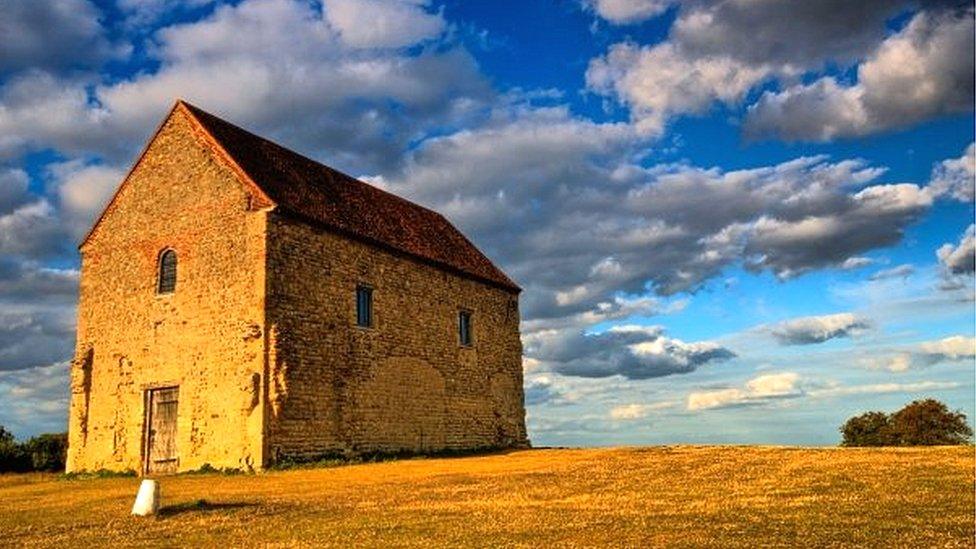
St Peter's Church at Bradwell on Sea was built on the site of a Roman fort
Badgers were the first suspects. But PC Long is in no doubt it was the result of night hawks (who, he points out, often dig during the day).
"Animals don't dig using a flat-sided object, Nor do they pat the ground back on top of the hole or take out a ring-pull and leave it by the side of the hole.
"We don't know what has been taken, if anything."
Do metal detectorists treading the fields of a treasure hotspot actually expect near-instant riches?
"Some people do it to get rich," says Essex detectorist Stuart Elton, "though they are usually the people who have just bought a detector.
"I do it for the history," he says. "I think that is why most of us do it."
His preferred term for what he does is "dry land fishing". Or walking with a purpose.
An Inside Out East feature on treasure hunting will be broadcast on BBC One in the east of England at 19:30 GMT and available on iPlayer afterwards
- Published7 August 2015
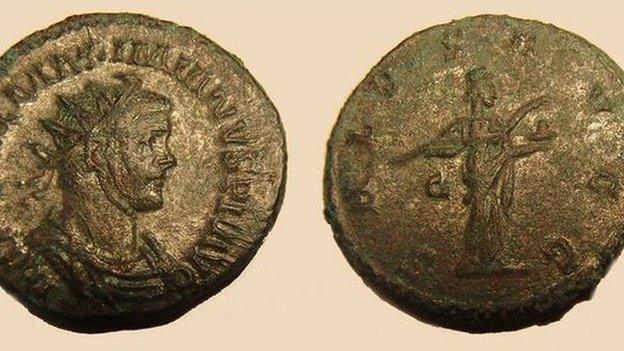
- Published21 March 2015
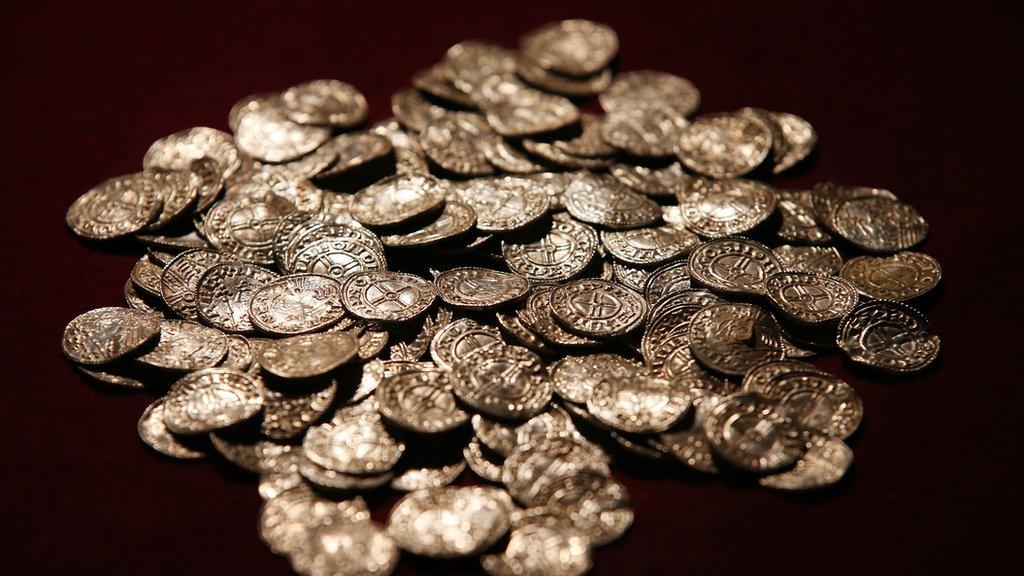
- Published2 January 2015
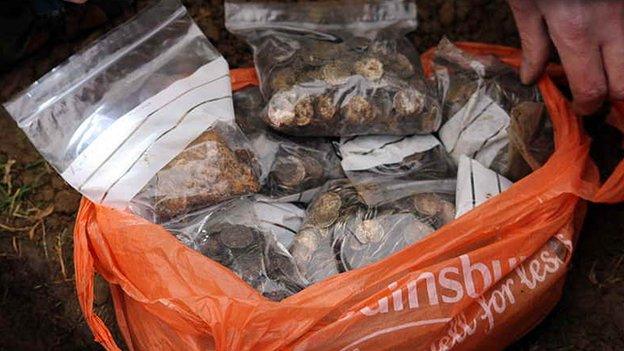
- Published13 December 2014
